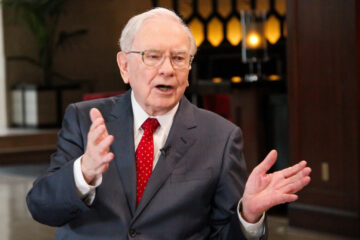If you’re a bargain hunter in search of brand name goods at a lower-than-average price, chances are you’ve popped into a TJ Maxx or Marshall before.
The discount retailers, owned by parent company TJX Companies (TJX) , which also operates HomeGoods, Home Sense, and Sierra, has over 4,800 stores and across nine countries (in the United Kingdom, it’s called TK Maxx).
Related: Sephora is suddenly abandoning a major market
If you haven’t been to a TJ Maxx or any of its sister stores recently, there’s still a very good chance you’ve noticed new ones in your area cropping up, taking over footprints from legacy strip mall retailers like Barnes and Noble or Joann Fabrics.
TJX captured seemingly outsized popularity in last several few years thanks in part to other retailers’ failures. Some giants are closing and consolidating as they struggle to make large mall rent payments and grapple with waning consumer interest.
Macy’s (M) , for example, said in late February that it planned to shutter 150 stores across the country after it rejected an attempt to take the company private. A drop in foot traffic in malls and consumers’ disinterest in middle-of-the-road fashion labels at full price have contributed to Macy’s decline, with its in-store private labels bringing in just 15% of sales, down from 16% a year earlier.
But part of TJX’s success hinges on many of these legacy retailer’s failures. Instead of buying and creating its own labels and trying to generate customers about their unique brands, TJX sources spillover wholesale merchandise, like apparel, jewelry, shoes and accessories, and sell them at discount from the original sticker prices.
This way, shoppers are still able to get the labels they might find at a mall or online, without the sticker shock or the trip out there.
TJX keeps growing and iterating
Pair recent high inflation with TJX’s winning retail model and it creates a recipe for high growth.
But TJX is constantly tweaking its stores and making changes. If you go into a TJ Maxx at the beginning of the week, chances are, a few days later that store looks awfully different, since it’s always sourcing new inventory and customers buy outsized amounts of merchandise when they’re in there, thanks to the treasure hunt shopping model.
And in March, TJ Maxx announced it would be making another change, not to its physical footprint or brand sourcing, but rather to its actual brand — something that rarely gets touched thanks to its familiarity and pull.
Traditionally, TJ Maxx used the Helvetica font to emblazon its logos both at the front of its buildings and on every tag and label it attached to its merchandise items. But in March the retailer rebranded, opting for a brand new, custom font and changing the appearance of its logo.
The idea to rebrand came from a spur-of-the-moment idea; TJ Maxx hadn’t been in the market for a font change. But after speaking with marketing and advertising agency McCann New York, executives decided they wanted to make the logo pop and look “more iconic,” — and since Helvetica is a cookie-cutter font that anybody with a word processor can access, it wasn’t going to fit the bill.
McCann then sourced Jeremy Mickel of MCKL Type and Design to help develop a custom font.
“Anything we tried in Helvetica reminded us of other brands,” McCann design head Matt van Leeuwen said, adding that the TJ Maxx logo still remained recognizable, so they didn’t want to stray too far from the original font.
“It is so full of character and lovely idiosyncrasies, and as we started to apply that in big and bold ways in the design system we are developing, we simply had the bright idea to turn the letter shapes of the logo into a font,” he said.
So they worked to round out some of the letters and give others more quirky characteristics. For example, the ‘m’ is now completely rounded out, while the ‘a’ gets a stem.
“We set out, at the beginning of the project, to bring iconicity to the brand,” van Leeuwen added. “The store experience of TJ Maxx can feel like a discovery, an array of so much apparel and home fashion, and we wanted to cut straight through the noise and get to the core of their identity, with radical simplicity.”
The new font will roll out soon, and TJ Maxx will start using it in everything from in-store branding to TV commercials. It comes in four weights: light, regular, medium, bold, and utilizes the double XX branding that’s now so closely associated with TJ Maxx, so expect to see a lot more of that in the coming months.


